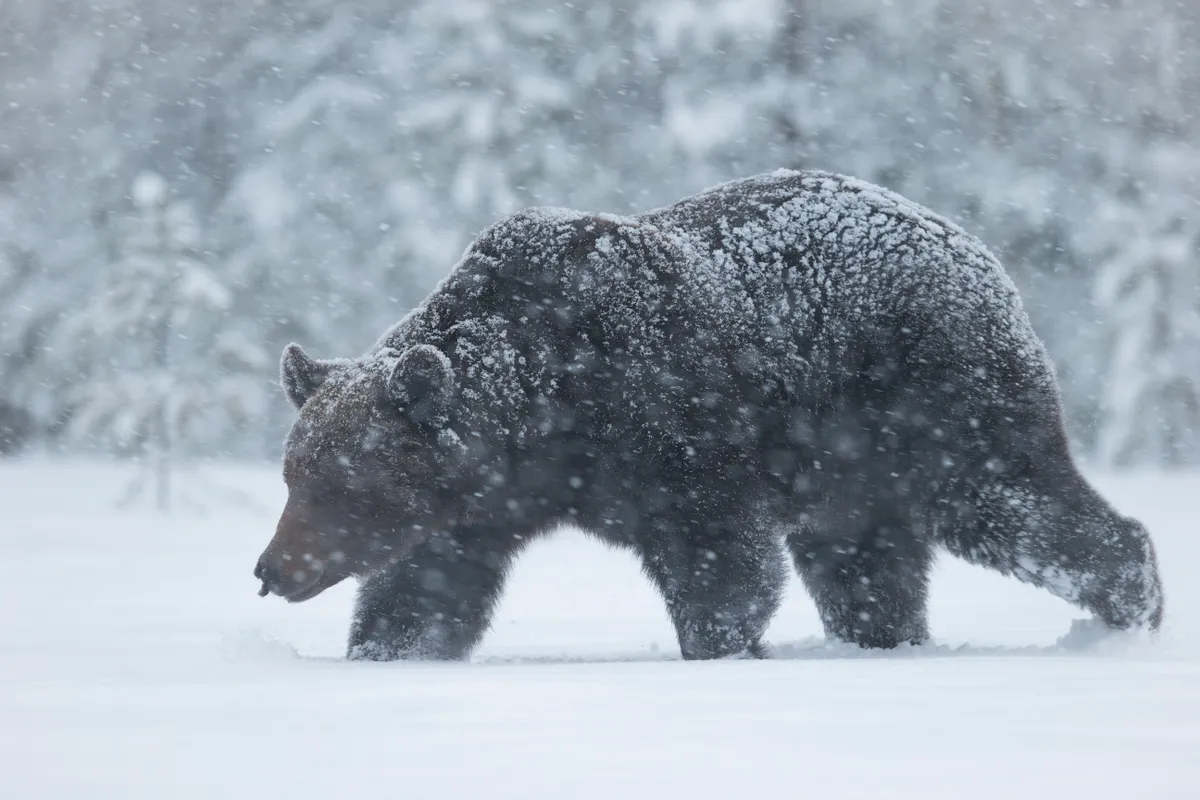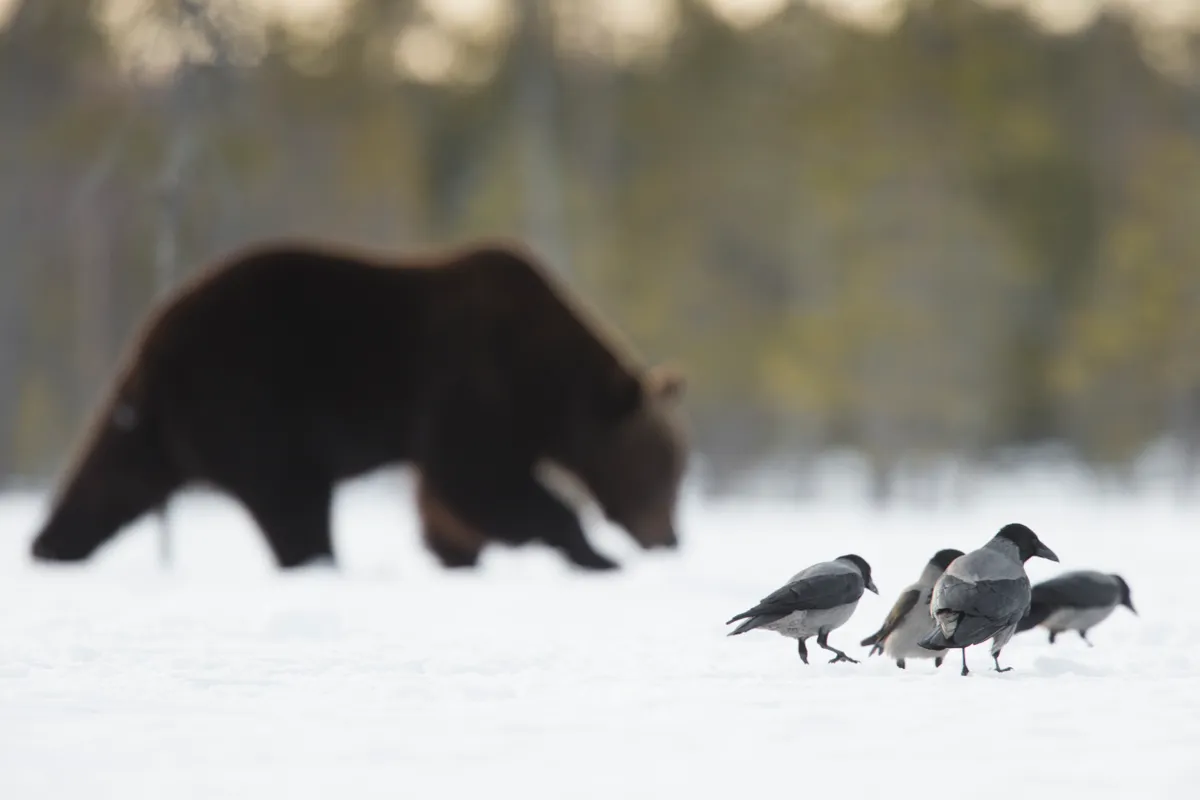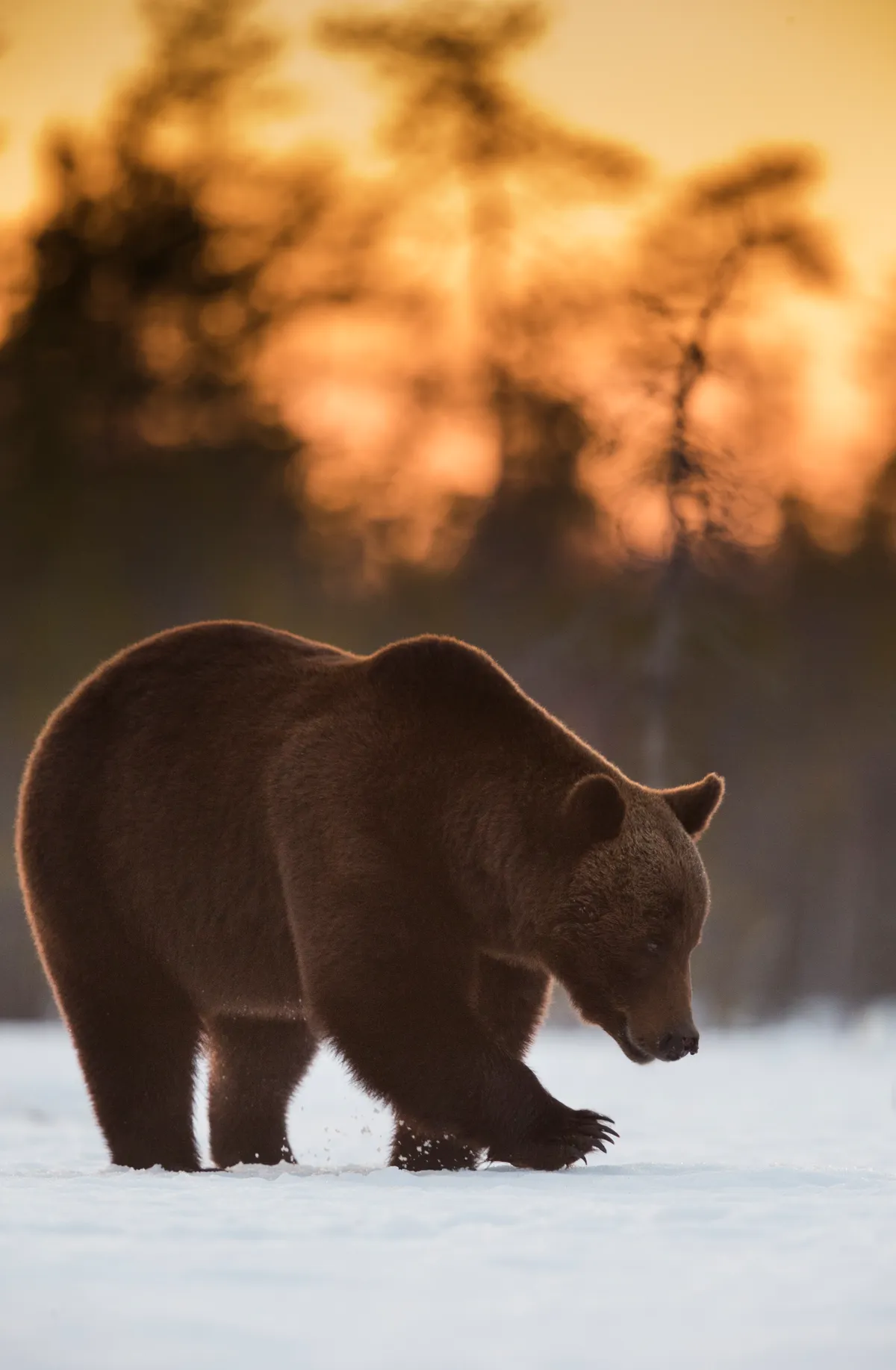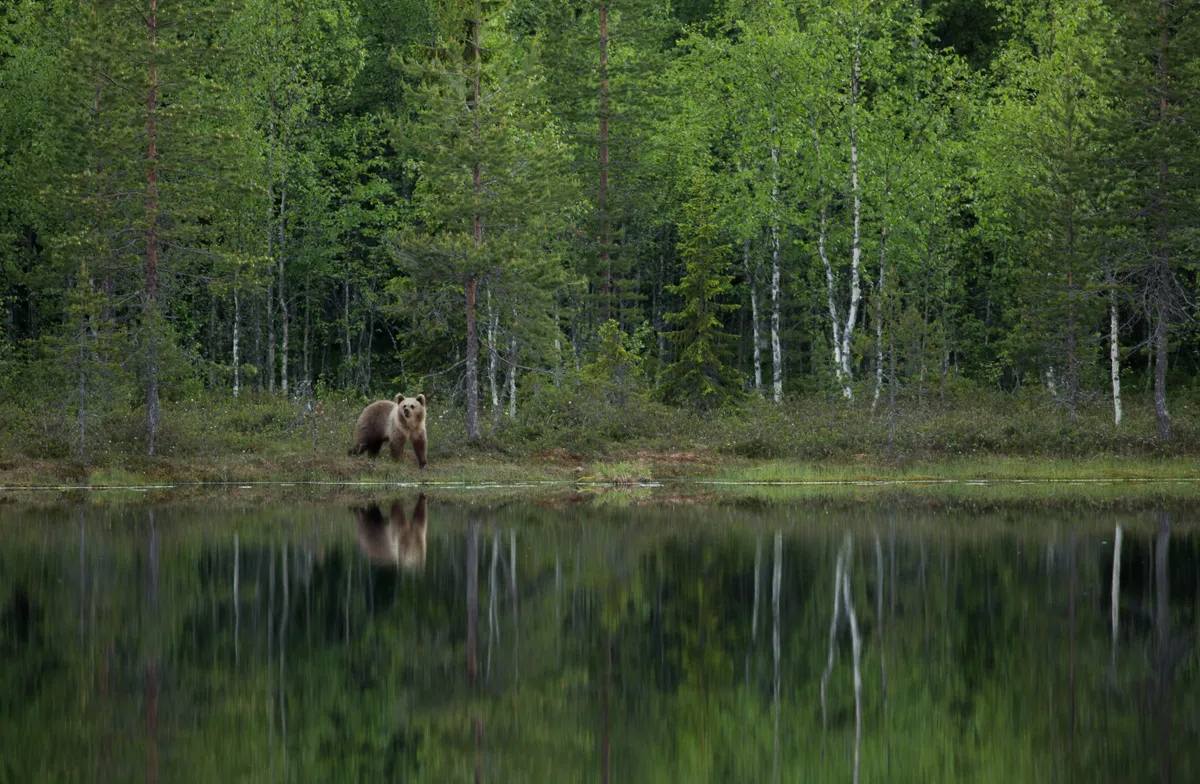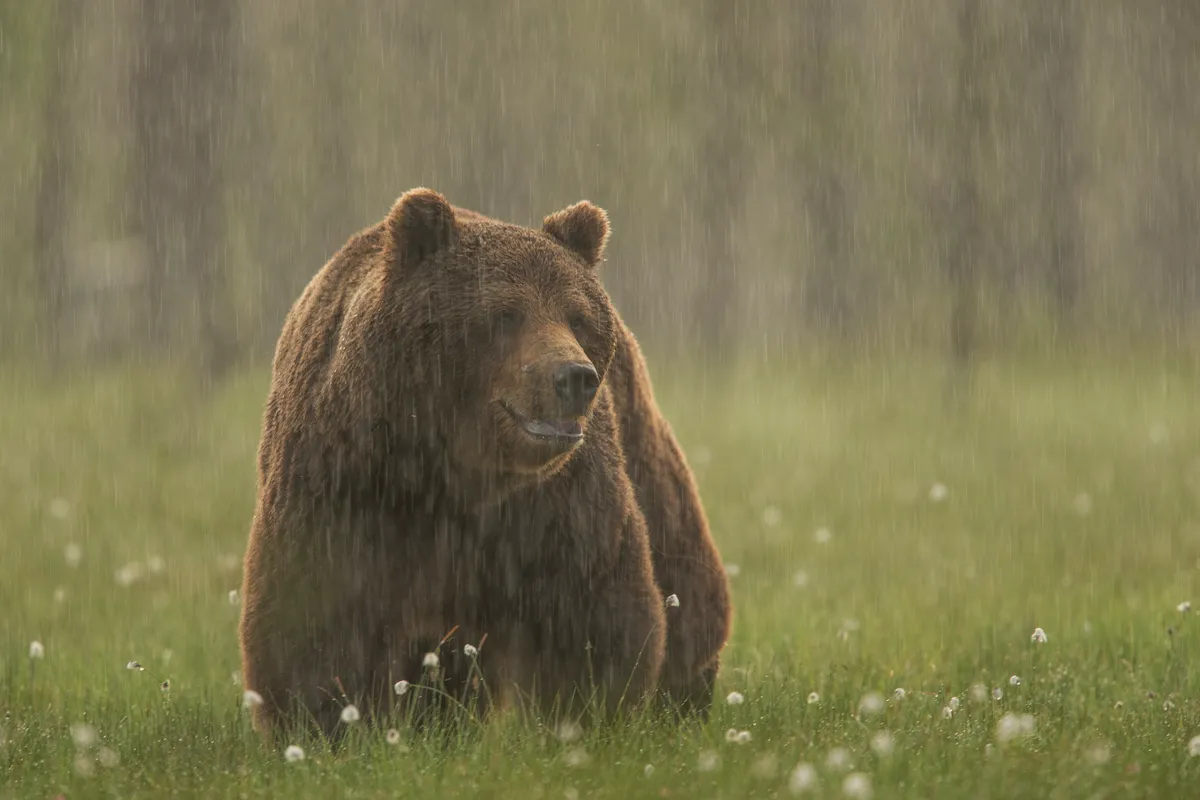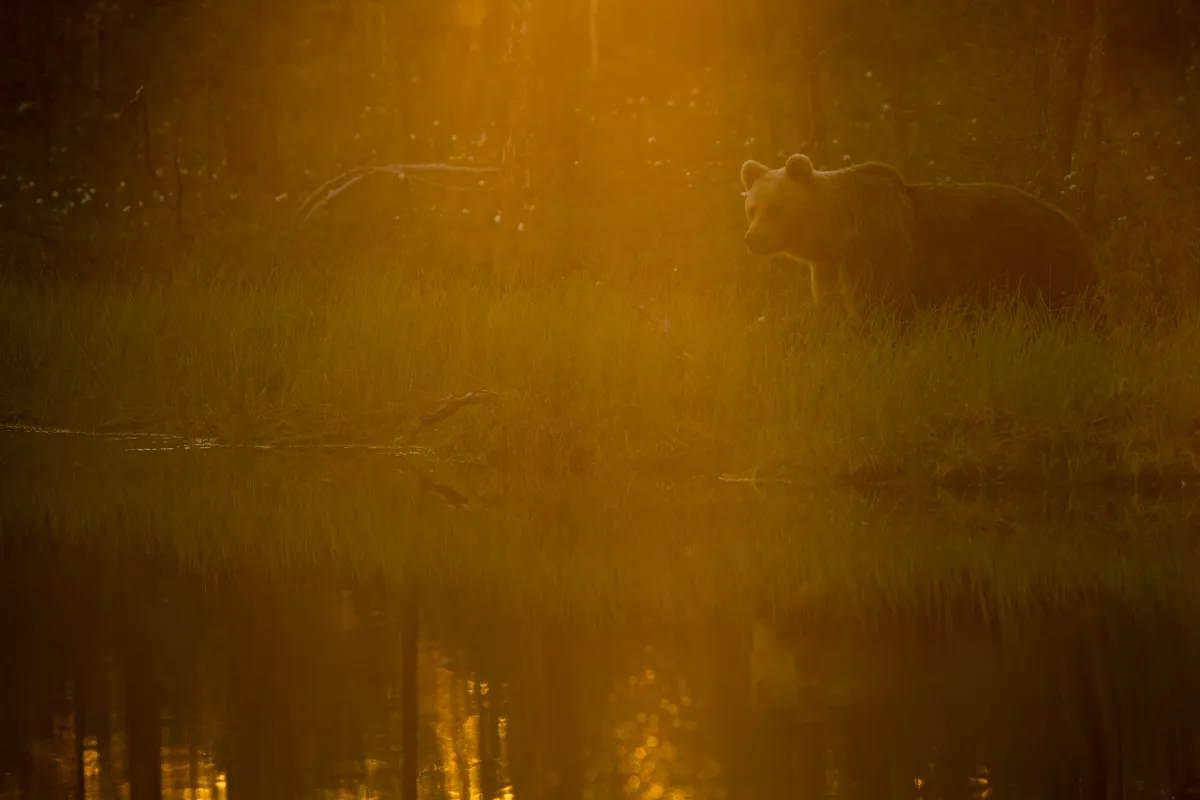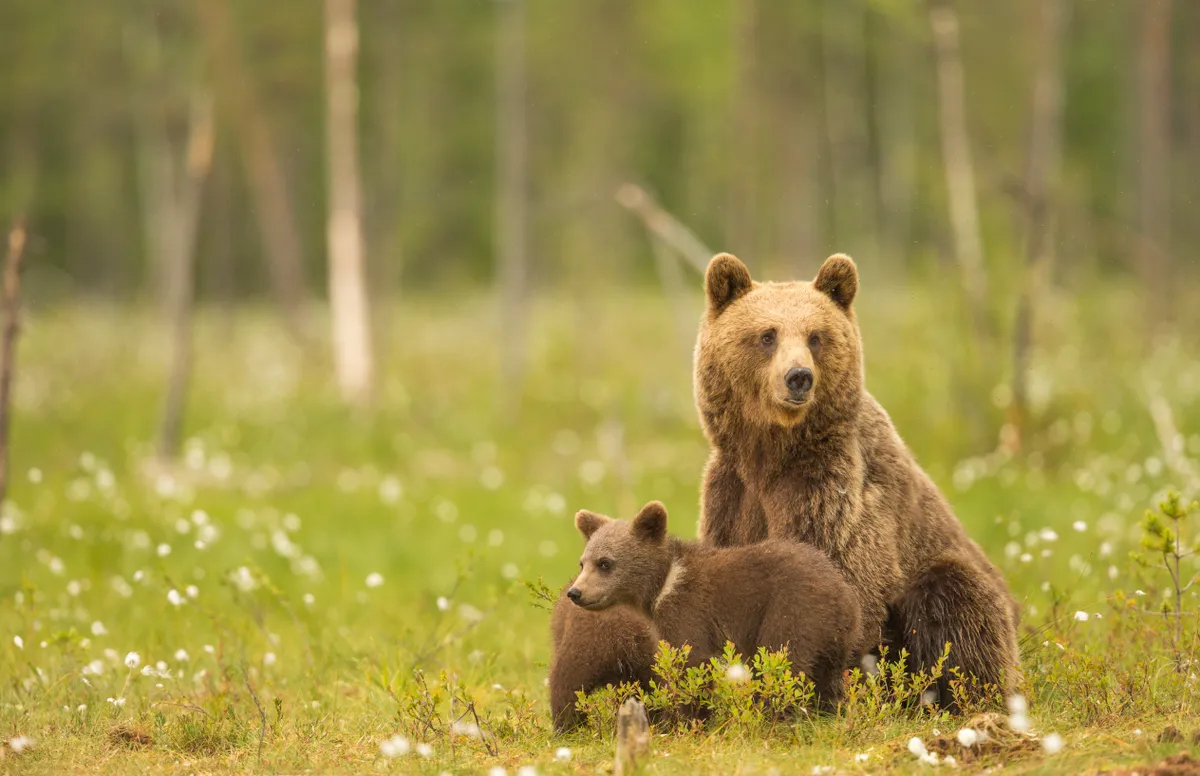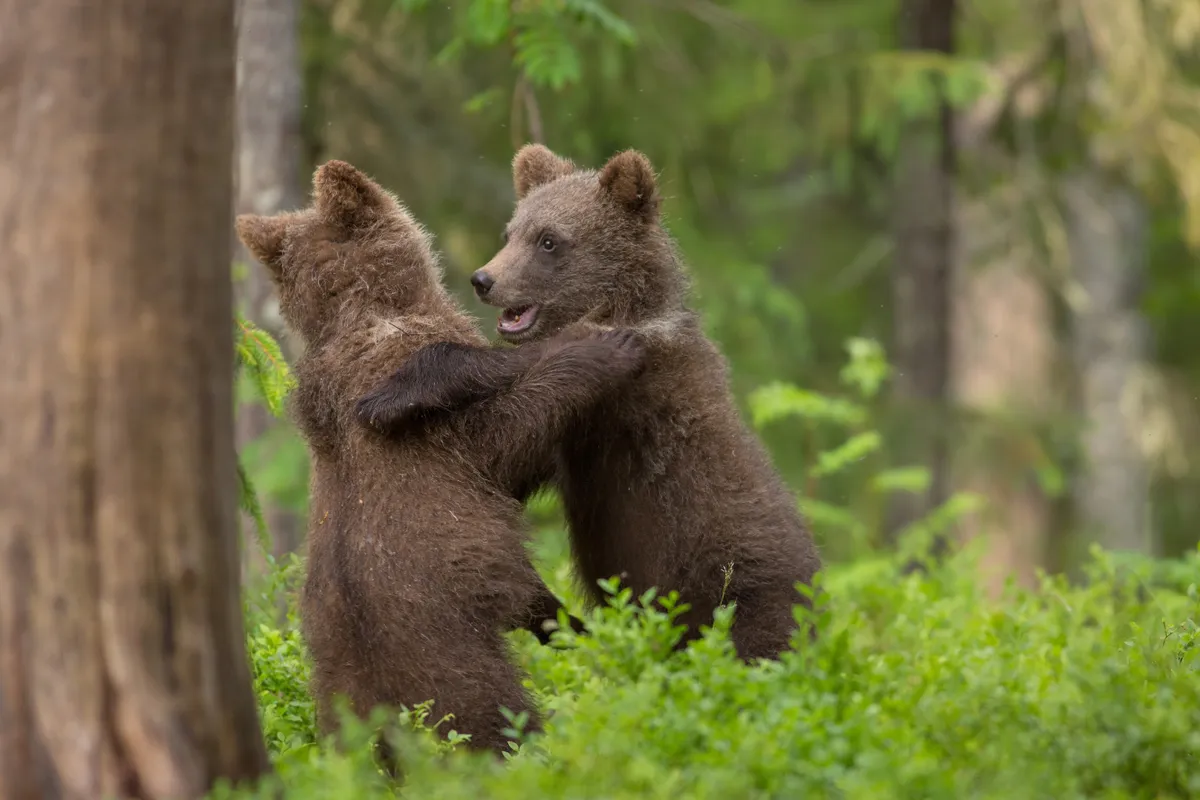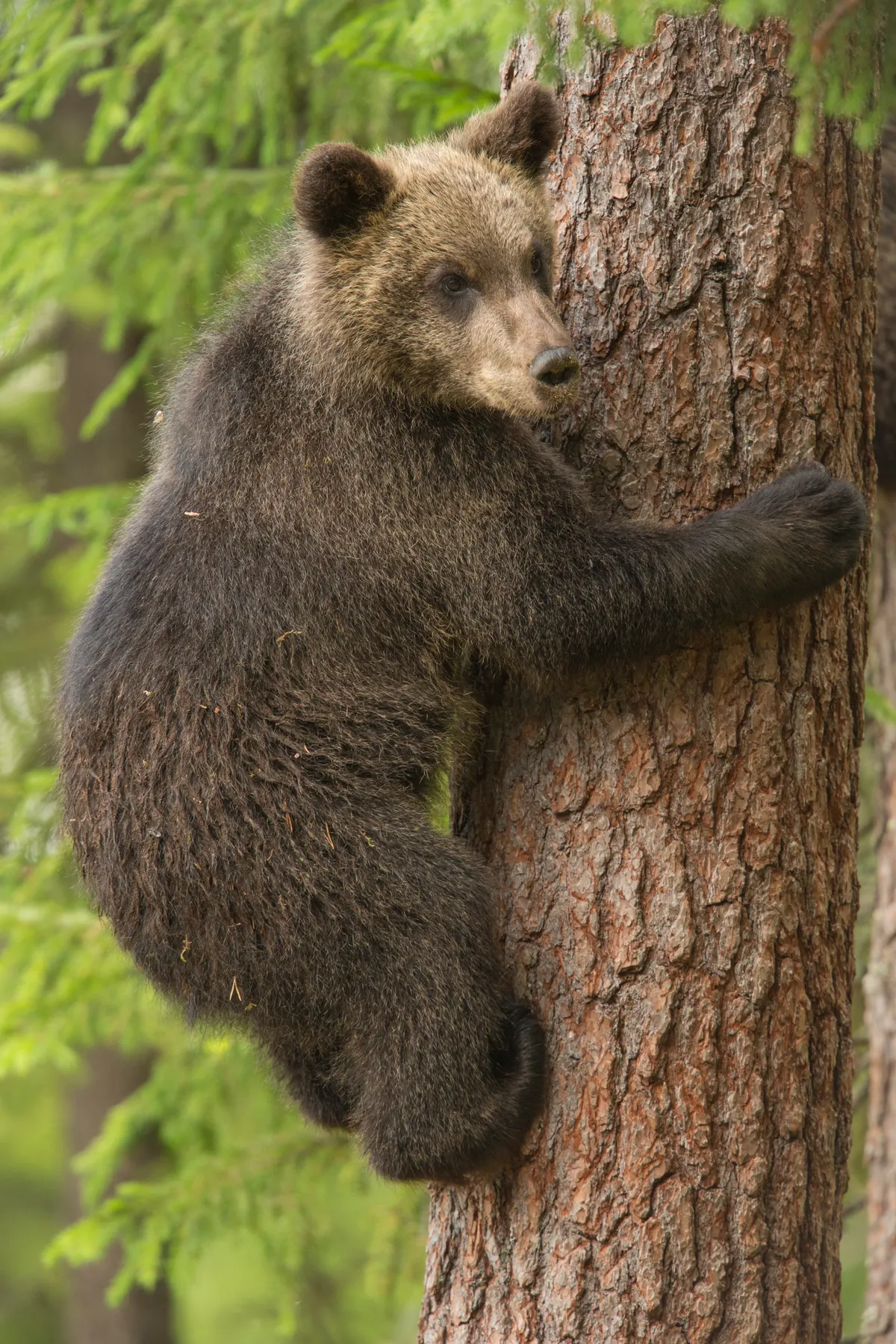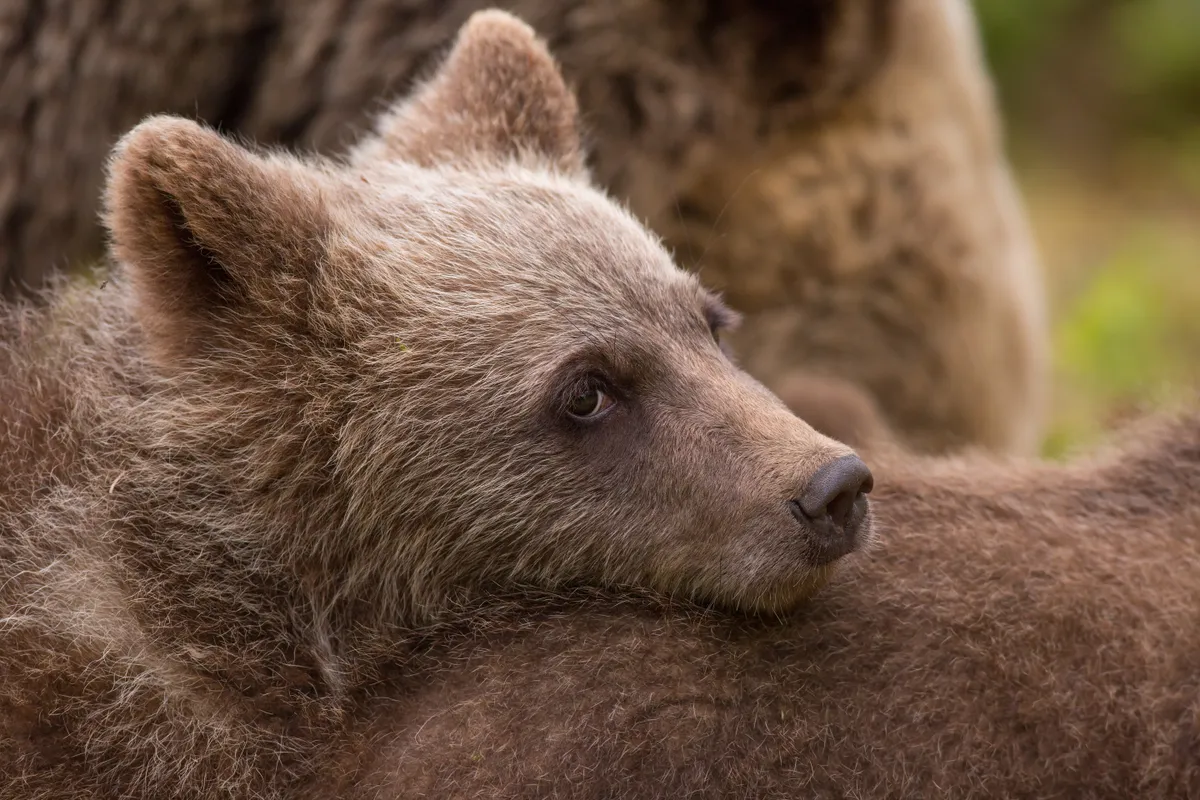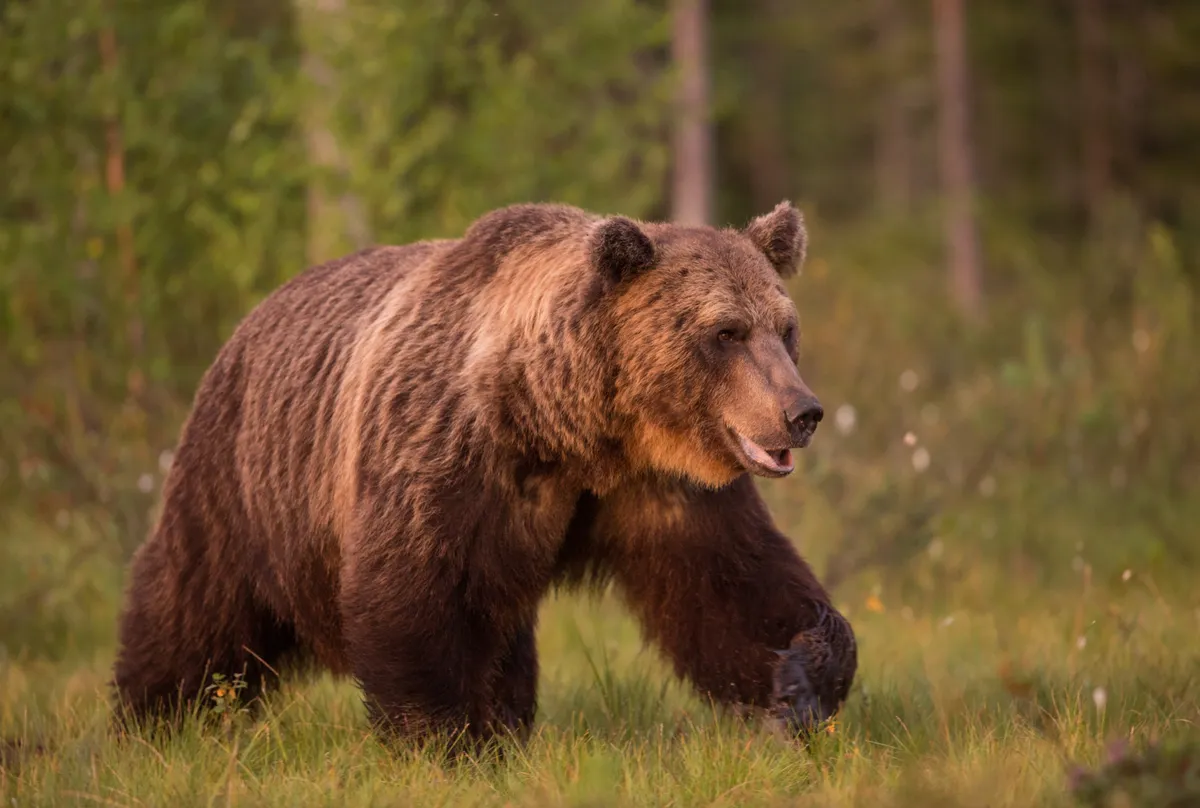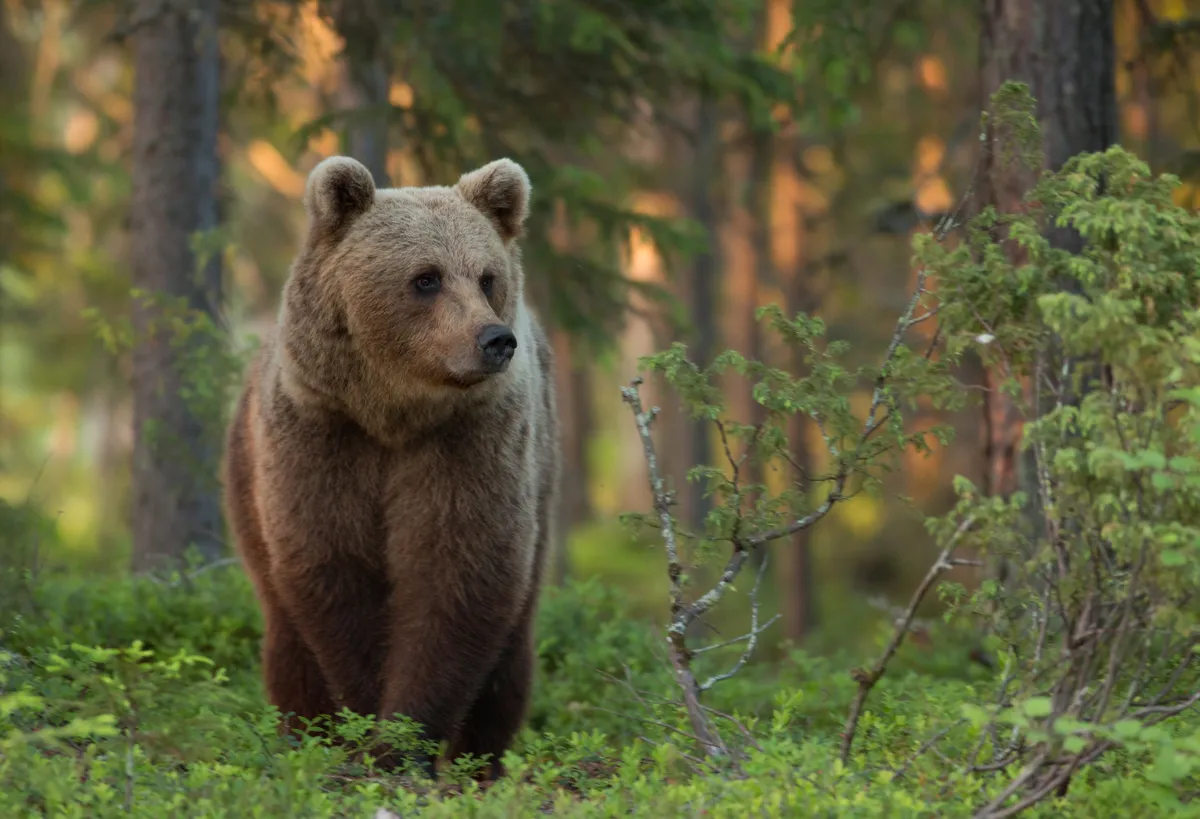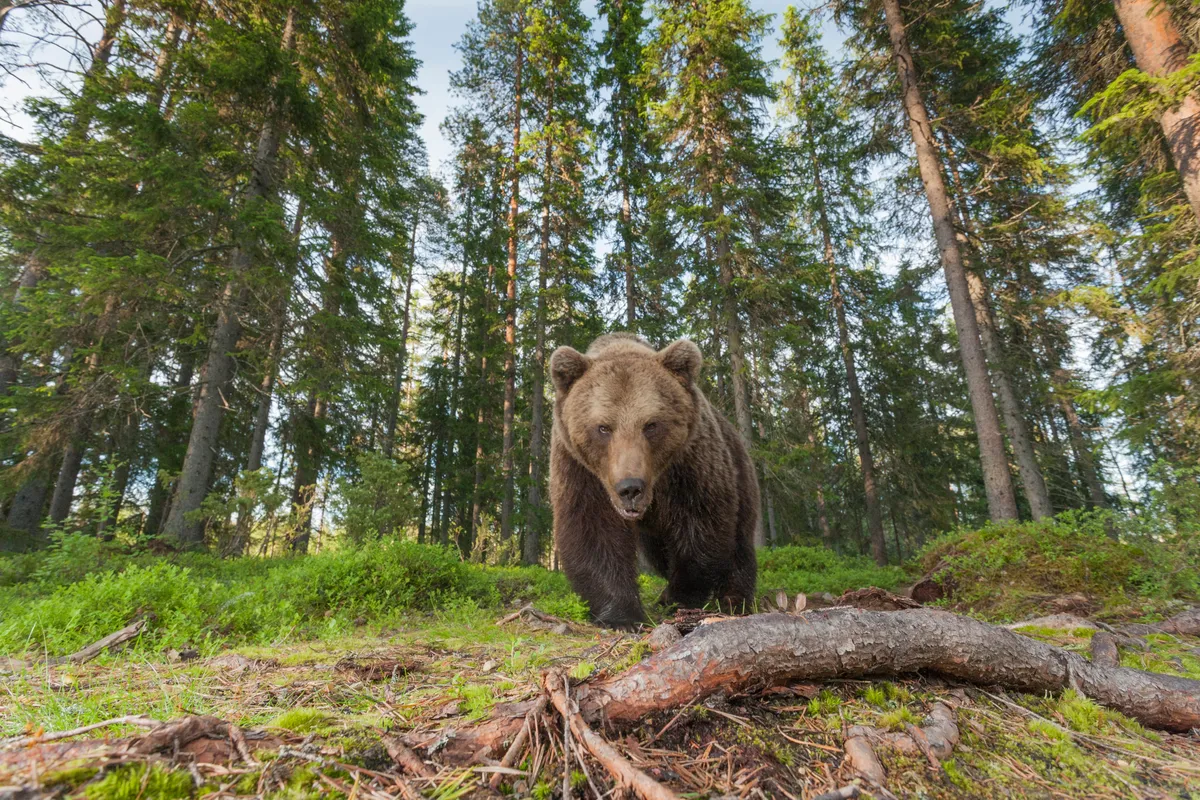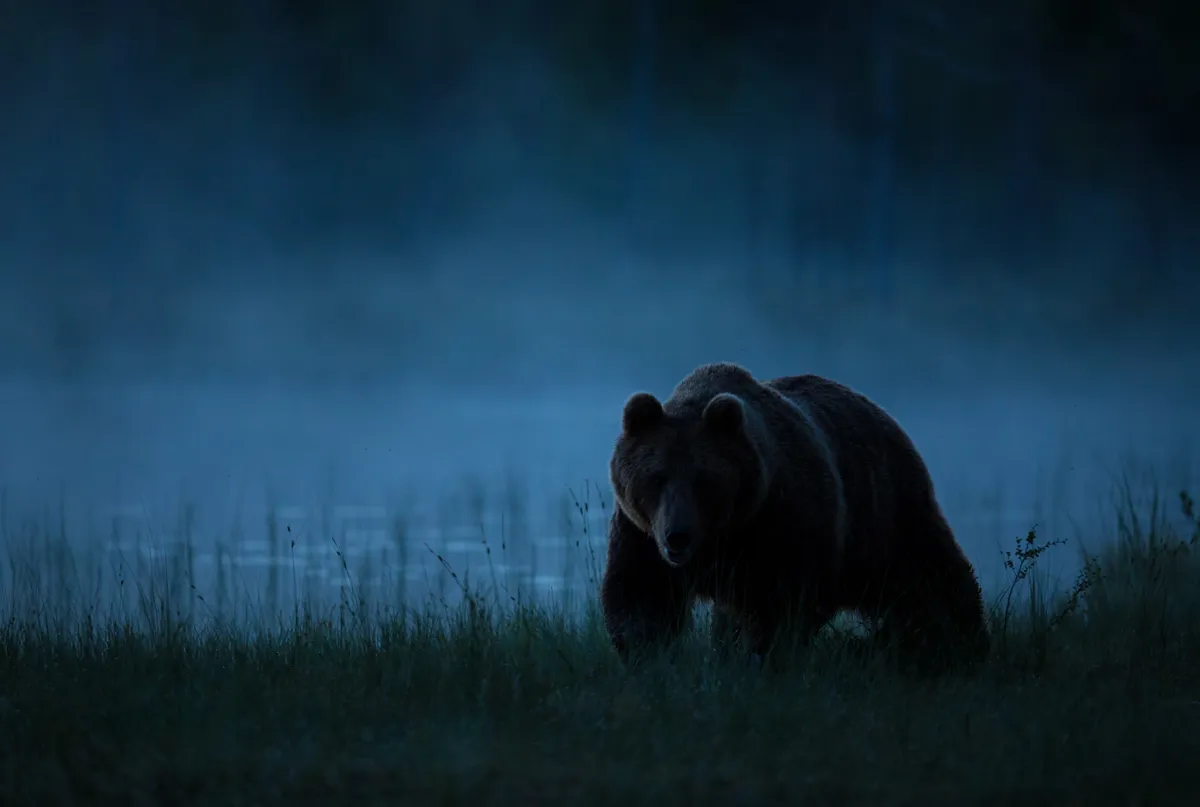In north-eastern Finland, European brown bears Ursus arctos arctos emerge from hibernation around April and remain active until late October.
Bears are a highly omnivorous species, which feed opportunistically. Their diet consists of food items such as berries, plant material, nuts, insects, carrion and small mammals. Female bears become sexually mature between 4-8 years of age, with the most common litter sizes producing between 1-3 cubs.
About the photographers
Kyle Moore is a multi-award-winning wildlife photographer based on the Suffolk coast, UK. Having grown up on the Norfolk/Suffolk border with a wealth of wildlife on his doorstep there is no surprise that Kyle’s passion for wildlife was ignited from a young age. Kyle has a particular fascination for the large apex predators of the world, and has recently worked extensively European brown bear. To view more of Kyle's photography visit his website.
Harry Read is a wildlife photographer based in Suffolk, with a zoology undergraduate degree from Swansea University. He is an aspiring naturalist and conservationist with a particular interest in the UK’s diversity of birds. To see more of Harry's photography visit his website.
Find out more about how to avoid bear attacks here
To view the images as a slideshow, click on the arrows in the top right hand corner of the photos below.
Snow Bear. Spring marks the emergence of European brown bear from their winter hibernation. Throughout the early part of Spring this far north amongst the Boreal forests it’s not uncommon to experience harsh and unpredictable weather, a sure reminder that the winter is refusing to loosen it’s grip just yet… © Kyle Moore Boreal Friendship. Corvids and predators such as bears have a love-hate relationship, which at times can be very interesting to observe. The keen nose of the bear often leads flocks of corvids to food such as a carcass, whilst the flocks offer a protective eye from other predators, which could pose a potential threat to the bear. © Kyle Moore Walking On Thin Ice. As spring rapidly draws to a close, the plentiful frozen lakes in Finland begin to melt and the landscape starts to transform. During the early hours, however, the temperature may drop low enough for the top layer to freeze once again. The bear’s use this to their advantage, however, every step must come with caution, in the case of sudden cracks to the ice. © Kyle Moore Reflection. During June and July, both the coniferous and deciduous trees are fully leaved, creating a consistently vibrant tree line. On still summer evenings, the placid waters of the lakes produce glassy reflections. © Harry Read Midsummer Rain. It is hard to believe such a large powerful creature could show fear from a little rain, but that is just the case with the secretive European brown bear. Periods of heavy rain can make bears feel uneasy while in open areas such as swamplands and forest clearings. The heavy rain can restrict their hearing ability, making them more wary of their surroundings. © Kyle Moore Midsummer Delights. Midsummer in the far Northern regions of Europe offers almost 24-hours of daylight. It’s only around 11:30 PM that the sun dips low enough to the horizon to create a beautiful golden light, here shown dappling through the forest. © Kyle Moore Mothers protection. Mother bears protect their young fiercely at all times from potential threats. One such threat is that of adult male bears, which may attempt to kill younger bears that aren't their offspring. This is all in the hope that the female will come into heat once again and become a potential mate. © Kyle Moore Sparring. Brown bear cubs are often observed play fighting together. By sparring with one another, bear cubs improve the fighting and hunting abilities which they will use in later life, as well as strengthening relationships with their siblings. © Harry Read Tree Hugger. It's a tough and scary life for a young brown bear. The sudden emergence of a large male bear prompts the entire litter of cubs to climb frantically up the surrounding conifer trees. This behaviour is a common flight response natural to many bear cub species. © Kyle Moore Siblings. Bear cubs will spend all of their time in a family group in their first few years. It soon becomes clear that learning to work closely with their siblings is very important for young bears, as bonds with their counterparts are strengthened. © Harry Read Dominance. The larger male bears are usually the first to emerge on summer nights, appearing from the forest fringe. Other smaller individuals fear large males, and will quickly move out of an area when a dominant bear confidently struts out of the forest in search of food. © Harry Read Enchanted Forest. As the sun dips close to the horizon on a clear evening, golden light is cast over the taiga forest, and bear activity increases. The dense woodland acts as a filter, which dapples the dreamy midsummer light creating a vibrant colour symphony. © Harry Read Preparation. As bears brace themselves for their long winter hibernation, their foraging patterns and diet vary greatly. Individuals can be observed foraging in forest clearings for nutritious morsels in the form of berries, found on the forest floor. © Kyle Moore Ghosts Of The Forest. During early autumn, clear days lead to cooler nights, meaning layers of mist rise slowly from the water's surface. In the stillness of the night, bears can be heard walking across the swampy terrain, as they appear like ghosts out of nowhere in the ethereal light of the blue hour. © Harry Read 